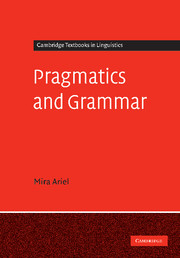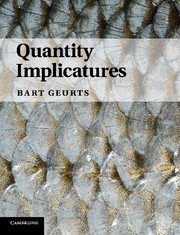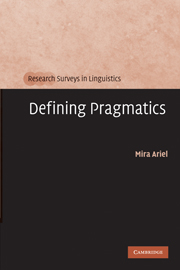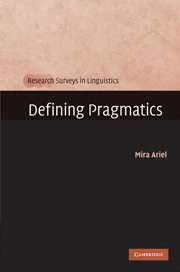Pragmatics and Grammar
When using language, many aspects of our messages are left implicit in what we say. While grammar is responsible for what we express explicitly, pragmatics explains how we infer additional meanings. The problem is that it is not always a trivial matter to decide which of the meanings conveyed is explicit (grammatical) and which implicit (pragmatic). Pragmatics and Grammar lays out a methodology for students and scholars to distinguish between the two. It explains how and why grammar and pragmatics combine together in natural discourse, and how pragmatic uses become grammatical in time.
- Introduces students to a major topic within current pragmatics research
- Based on natural linguistic examples, therefore providing more persuasive data
- Addresses how we should tease grammar and pragmatics apart in controversial cases
Product details
No date availablePaperback
9780521559942
362 pages
247 × 174 × 22 mm
0.75kg
Table of Contents
- 1. Introduction: grammar, pragmatics and what's between them
- Part I. Drawing the Grammar/Pragmatics Divide:
- 2. Distinguishing the grammatical and the extragrammatical: referential expressions
- 3. Distinguishing codes, explicated, implicated and truth-compatible inferences
- Part II. Crossing the Extralinguistic-Linguistic Divide:
- 4. Grammar, pragmatics and arbitrariness
- 5. All paths lead to the salient discourse pattern
- 6. The rise (and potential fall) of reflexive pronouns
- Part III. Bringing Grammar and Pragmatics Back Together:
- 7. Grammar/pragmatics interfaces.






